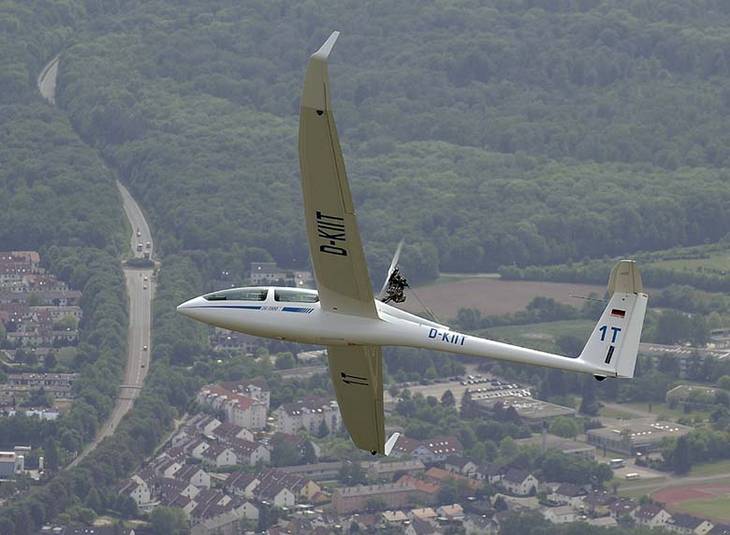A report in Aerokurier 8/2005 by Gerhard Marzinzik
Even a small engine may extend the usage envelope of a glider significantly.
This advantage is now also available for the DG-1000.
Her particular specialty: The engine starts by an easy press of a button.
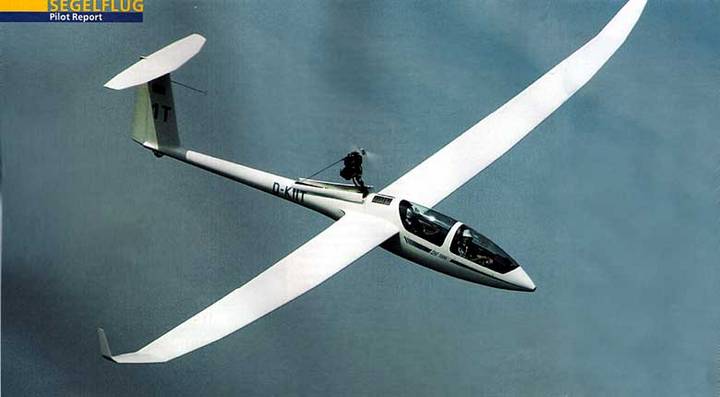
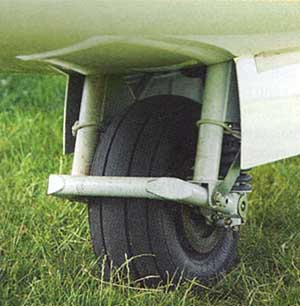 The DG-1000, the two-seated flagship of DG Flugzeugbau, was consequently designed for a wide usage spectrum. The high performance potential of the 20m wingspan configuration with winglets is highly valued in competitions, but hardly needed for training. The wing sectioning allows also an 18m configuration, which creates an agile and easy to handle airplane; equally admired by students and instructors. The generously dimensioned airbrakes allow steep approaches similar to modern single- seaters.
The DG-1000, the two-seated flagship of DG Flugzeugbau, was consequently designed for a wide usage spectrum. The high performance potential of the 20m wingspan configuration with winglets is highly valued in competitions, but hardly needed for training. The wing sectioning allows also an 18m configuration, which creates an agile and easy to handle airplane; equally admired by students and instructors. The generously dimensioned airbrakes allow steep approaches similar to modern single- seaters.
The high and large main wheel provides large ground clearance for the wing, particularly welcome at out landings. Its dampening absorbs even large bumps of the landing strip.
In the T version should out landings however become a rather rare event.
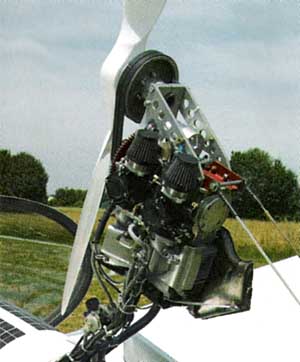 In contrast to the usual retainer engines comes the DG-1000T with an electric starter. This avoids the stressing, for inexperienced pilots even dangerous, standard start drill:
In contrast to the usual retainer engines comes the DG-1000T with an electric starter. This avoids the stressing, for inexperienced pilots even dangerous, standard start drill:
Extend engine dive with high speed and open decompression valve to make the prop windmilling let the engine fire and pull up to normal speed.
Following the DG philosophy is the engine operation of the DG-1000T mostly automated, from the extension all the way to the final retraction. However my flight begins with an aero tow from the grass strip in Bruchsal with the DG-1000T in pure sailplane configuration. The summer thermals invite to circle, letting the climbing talents of the DG-1000T shine.
The extra 55kg in engine bay and tank are not recognizable. The control inputs required to direct her into the lift center are small and harmonic, as expected from a modern sailplane. Stoic and undisturbed from small turbulences keeps she circling.
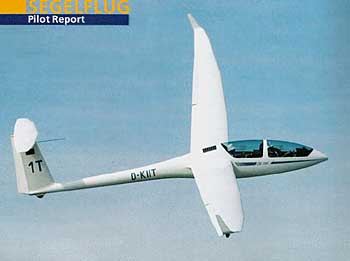 But also rough thermals are not becoming a challenge which should be better avoided. The DG-1000T follows precisely every control input. Staying in the lift center is easy and requires no extra skills. The pilot has always the positive feeling of being in full control.
But also rough thermals are not becoming a challenge which should be better avoided. The DG-1000T follows precisely every control input. Staying in the lift center is easy and requires no extra skills. The pilot has always the positive feeling of being in full control.
The optional stall warning of the DG-1000T provides a precise answer to the question how slow can I fly to maximize my lift?. The stall warning is integrated into the new DEI (Digital Engine Instrument) and implements a direct measurement of the angle of attack. Speed changes and accelerations have therefore no disturbing effect. This can be nicely observed in dynamic lift situations, where the alarm triggers at varying speeds.
The vibration alarm in the control stick is very distinct from the ever increasing flood of acoustic information in the cockpit. The setting in the DG-1000T prototype caused the alarm to trigger sufficiently early. Otherwise is the approaching stall in straight and curved flight announced through a steep upward pointing nose and unmistakable vibration. Further speed reduction cause a turn over the wing and dive. Release of the elevator and opposite rudder bring her back under control with only little loss of altitude.
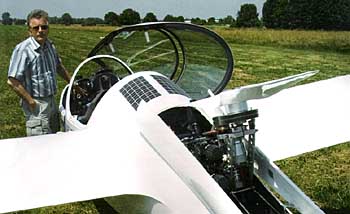 Equally easy and uncomplicated is the engine management of the air-cooled 30 HP Solo 2350C. Switching the ignition on the DEI to on causes the extension of the engine through an electric spindle actuator. The ideal airspeed is 90 km/h to minimize the drag.
Equally easy and uncomplicated is the engine management of the air-cooled 30 HP Solo 2350C. Switching the ignition on the DEI to on causes the extension of the engine through an electric spindle actuator. The ideal airspeed is 90 km/h to minimize the drag.
The extension progress is graphically shown on the display of the DEI, but can also be observed through the little rearview mirror in the cockpit. The starter button in the throttle control is activated as soon as the engine tower is fully extended. The starter is activated without delay if the button was pressed earlier during the extension. The DEI primes the engine depending on the CHT-temperature. I exercise the whole procedure several times, the engine starts reliably every single time and provides immediately power.
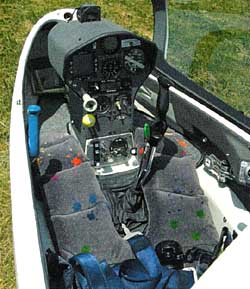 The Operations Manual shows for the DG-1000T an average climb of 1.3 m/sec in undisturbed air. This was difficult to verify in that thermal active day. This relatively low climb performance is totally adequate for a retriever engine, but can be easily whipped out by fast sinking air masses.
The Operations Manual shows for the DG-1000T an average climb of 1.3 m/sec in undisturbed air. This was difficult to verify in that thermal active day. This relatively low climb performance is totally adequate for a retriever engine, but can be easily whipped out by fast sinking air masses.
This experience shows once more that the turbo retriever engines are not designed and intended as rescue from a pending out landing in low altitude. These airplanes need better planning by the pilot. This applies also to the DG-1000T, even though the electric start of the DG engine causes less altitude loss than the usual dive-start method.
The vibrations at full power are low, also the noise is bearable. A headset is of course more comfortable. The DEI informs at any time reliably about all engine data and the remaining fuel capacity.
The return to the pure glider configuration is likewise easy. After idling the engine and then switching off the ignition, the engine tower tilts partially back to take the propeller out of the slipstream. When the propeller stops, the propeller stopper extends. A short press of the starter button (the ignition is disabled) advances the propeller until it is held by the propeller stopper in a vertical position. Now the engine will be completely retracted.
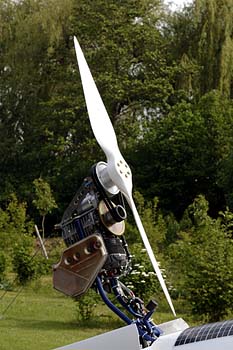 These steps can also be manually controlled in case the automated system fails, and allow at least removing propeller and engine from the direct slipstream. But even the drag of the extended and stopped engine yields only in slightly increased descend speeds. A sudden stop of the engine at the optimum climb speed of 90 km/h does not cause a rapid loss of airspeed, leaving sufficient time for the pilot to react.
These steps can also be manually controlled in case the automated system fails, and allow at least removing propeller and engine from the direct slipstream. But even the drag of the extended and stopped engine yields only in slightly increased descend speeds. A sudden stop of the engine at the optimum climb speed of 90 km/h does not cause a rapid loss of airspeed, leaving sufficient time for the pilot to react.
The fuel tank in the baggage compartment holds 22.5 liters fuel-oil mixture (50:1) for the two-stroke engine. The useable capacity is 22 liters. Refueling is done through a hose connected to the quick-connect fitting in the engine compartment and using the on-board fuel pump. The range in straight power flight is 230 km; using a saw-tooth style, 370 km and more are possible. This should be sufficient to bridge even large weak weather areas, so that the wing tanks remain exclusively for water ballast.
To enable an optimum C/G position in all load and ballast situations, the DG-1000T has a water tank and a trim-weight box in the vertical fin.
Chief designer Wilhelm Dirks succeeded to retain the suitability for flying clubs of the DG-1000T. The realized retainer engine system is easy to use and requires only a minimum of attention and training. No abnormal flying situations are required or expected during regular usage ore during malfunctions.
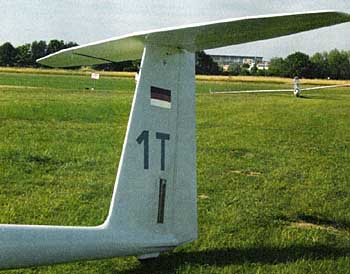 The electric starter allows starting the engine on the ground and utilizing it as a booster for aero tows. This is particularly beneficial if towed by a motorglider, since the flight characteristics of both airplanes are in good harmony.
The electric starter allows starting the engine on the ground and utilizing it as a booster for aero tows. This is particularly beneficial if towed by a motorglider, since the flight characteristics of both airplanes are in good harmony.
Experiments in Bruchsal resulted in climb speed beating even the renowned tow performance of the Remorqueur. The ground roll was shorter, and at the end of the runway a greater height could b reached.
The base price of the DG-1000T (Euro 73,400) increases by approximately 26,000 Euro.
A well spent investment. The usability of the DG-1000 increases substantially. With the retainer engine available, cross-country flights become possible even on weekdays, when no recovery crew can be found. The flying fun increases substantially due to the relaxation of the get home tension.
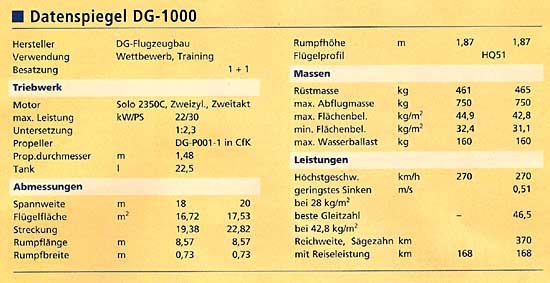
Gerhard Marzinzik
